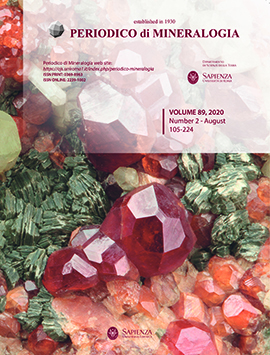Multilayer corona textures in the high-pressure ultrabasic amphibolite of Mt. Nieddu, NE Sardinia (Italy): equilibrium versus disequilibrium
Keywords:
ultramafic amphibolite, metamorphic evolution, corona textures, counterclockwise P-T path, Variscan SardiniaAbstract
Rocks with coronitic textures around igneous relics of olivine and plagioclase were sampled from the ultramafic amphibolite of Mt. Nieddu being part of the so-called Migmatite Complex of northeast Sardinia. These textures are characterized by mono- or bi-mineralic layers of orthopyroxene and clinopyroxene around olivine, and a symplectite of clinopyroxene + spinel and garnet around plagioclase; all these minerals were overgrown by amphibole. We applied conventional geothermobarometry and P-T pseudosection modelling of microdomains in order to constrain the main steps of the evolution of the sampled rocks. The igneous crystallization occurred at 0.2-0.5 GPa and minimum T of 780-850 °C. Garnet is the last coronitic phase formed at estimated pressures of 1.3-1.7 GPa at 680-730 °C. As similar conditions were previously determined for the pressure peak on an adjacent rock, we conclude that during corona formation chemical equilibrium was reached probably over a much wider range than of mm-sized microdomains. Slow reaction kinetics is responsible for the partial preservation of the igneous phases.


